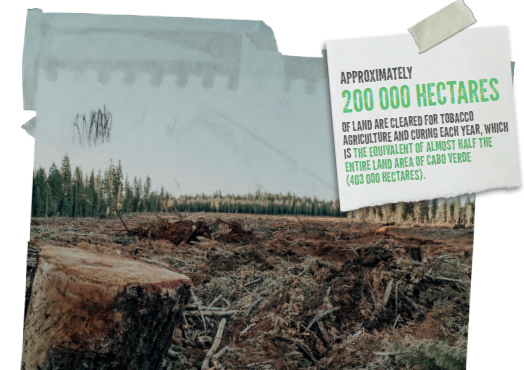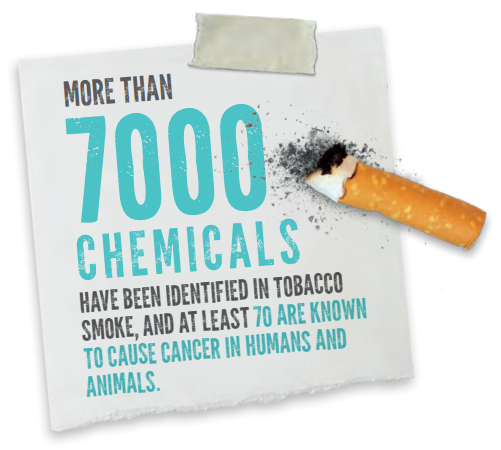4 ways tobacco is devastating the environment
23rd June 2022

23rd June 2022
We’ve known for decades that tobacco is the only legal consumer product that kills up to half its users — about 8 million people per year. A recent report identifies the key ways in which it also devastates the environment.

To make space for tobacco growing and to obtain wood for curing (drying) harvested tobacco, trees are cut down and land cleared. About 1 tree is needed to make 300 cigarettes, according to the report by the World Health Organization, Tobacco: Poisoning our planet.
About 200,000 hectares (ha) of land are cleared for tobacco growing and curing each year. This equals almost half the entire land area of the African island country of Cabo Verde (403,000 ha). Tobacco farming accounts for about 5% of all trees cut down yearly worldwide.

Tobacco smoke contains three major greenhouse gases (CO2, methane and nitrous oxides), as well as other air pollutants. It produces up to 10 times as much particle matter pollution — microscopic solids or liquid droplets that can be inhaled — as diesel exhaust. In 2014, cigarette manufacturing generated 84 megatons of CO2 emissions. That’s the equivalent of one-fifth of the CO2 produced by the airline industry each year.
Every year, about 22 billion tonnes of water are used in tobacco production globally. This is the amount found in 15 million Olympic-sized swimming pools, or roughly the volume of water that flows in the Amazon, the largest river in the world, in one day. Tobacco production requires up to eight times more water than tomatoes or potatoes. For every kilogram of tobacco that is not produced, consumed and disposed of, the potable water needs of one person can be met for an entire year.
These include the waste produced by smoking (which generates cigarette butts) and the use of new smokeless products. Toxic, hazardous waste E-cigarettes and other nicotine delivery products contain metals, plastics and batteries. These are classified as toxic hazardous waste whether they are littered into the environment or disposed of in a waste bin. Cellulose-acetate-based cigarette filters do not biodegrade and can remain in the environment for long periods of time in the form of microplastics, which could cause major harm to aquatic environments and ecosystems. The filters also release into ecosystems nicotine, heavy metals and other chemicals that they have absorbed. This in turn affects the livelihood and health of fishing communities in coastal areas, and those who eat seafood affected by the contamination.
The report also notes how the tobacco industry ‘greenwashes’ its image using many tactics.
“One example is the marketing and eco-labelling of cigarettes as ‘natural’ or ‘organic’, suggesting to smokers that these products are somehow less harmful.”
So-called ‘corporate social responsibility’ (CSR) activities are another way the industry deflects attention from tobacco’s deadly impacts to its supposed ‘good deeds’. “However, the industry’s self-reported data are intended to mislead the public and sustain its operations in tobacco-growing countries, and lack essential information on the sheer size of destruction imposed on the environment and communities,” says the report.

The report suggests steps that individuals, groups and governments can take to prevent the tobacco industry’s environmental destruction. For example, Governments can impose an environmental tax on cigarettes. Three African countries — Benin, Chad and Gambia — have done so. Civil society can expose tobacco industry tactics and efforts to greenwash its reputation. Individuals can support policies that ban single-use plastics,which include cigarette filters, smokeless tobacco pouches and disposable electronic cigarettes.
For more on the health risks of tobacco see our briefing.